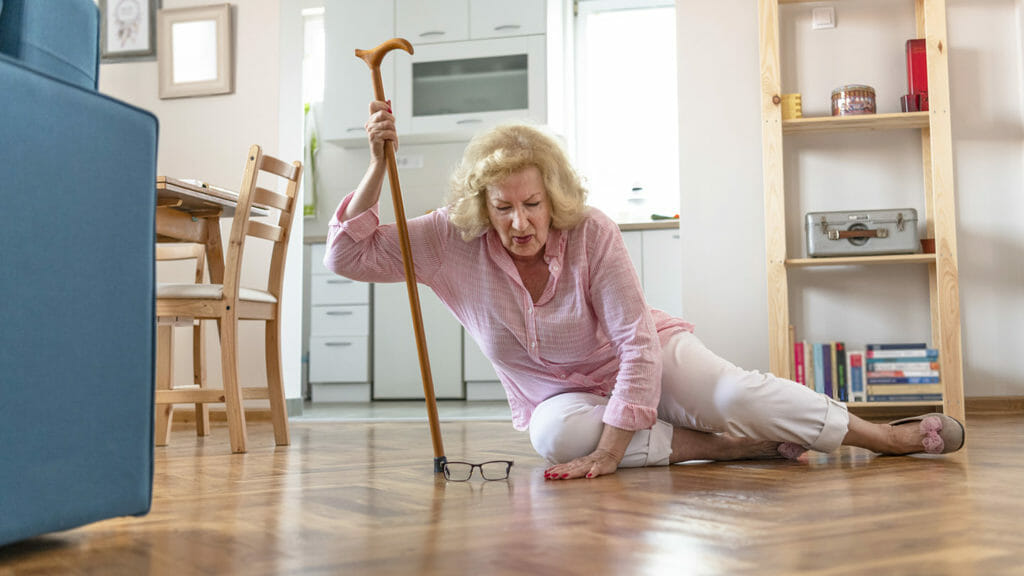
Technology designed to prevent and preempt falls, the leading cause of death for older adults, continues to trend toward being as unobtrusive and convenient as possible for end-users, one smart system company touts.
Essence Smartcare is one of many companies that have tried to design their intricate sensors, either at home or in care facilities, to be as simple as “a box and a button” for those using them, said Essence spokeswoman Heather Sellar.
Essence’s newly released Umbrella mPERS exemplifies this concept, as a complex, small device that can hang on a necklace or belt and directly alert a monitoring center or facility if they need assistance.
Other healthcare organizations are launching products or tools as part of Falls Prevention Awareness Week, which kicked off Monday.
While many seniors have concerns about privacy, they are getting more comfortable with the idea of ambient sensors that can be worn, or placed in a room, without the need for a camera, Sellar said.
“It’s all passive monitoring,” Sellar said. “There’s no flashing, or buzzing, or any sounds going off. Ease of use is our largest concern.”
Many tools, including Essence, are now using AI to track behavioral patterns such as normal, and abnormal, bathroom use; the latter is a common precursor to a fall incident.
But if and when falls do occur, sensors have analytics within a device that can now determine the orientation of the person within a room, Sellar said, such as if they are sitting on a chair, or lying on the floor.
The mPERS will be unveiled at the Medical Alert Monitoring Association annual conference, held this week in New Orleans.
Although the senior living and care sector has been relatively late to introduction of those kinds of monitoring tools, their adoption has come rapidly, Sellar said. A big reason for that may be the increased use of technology since the pandemic, as well as staffing issues that have created the need for more passive assistance in senior care.
“We’ve seen for decades, everybody has monitors in their car, airplanes, traffic sensors, the street itself,” Sellar said. “I think people are getting more comfortable with it. There’s just a lot of things that have happened in the last five years to push this forward towards broader acceptance.”


